Statewide Planning and Research Cooperative System (SPARCS) data resubmissions impact a hospital or ambulatory surgery center’s ability to meet New York state requirements for clean patient discharge and visit records. But if you can resolve friction points created by SPARCS errors, you’ll have more resources available to focus on delivering affordable, quality care.
In this blog, we’ll go over how inefficient SPARCS data processing can impact your facility. Then, we’ll cover how you can optimize the process to achieve the three main benefits of automated SPARCS data submission.
How inefficient SPARCS data processing impacts facilities
SPARCS data provides DOH with details on each hospital’s inpatient stays and outpatient and ASC visits. If a facility submits data with errors, it must dedicate additional time to rework and resubmit claims data. This could lead to increased compliance risks, DOH formal Statement of Deficiency and delay your Certificate of Need process. It could also lower per claim ROI, as more time is being spent by the coders re-working the case.
Inefficient SPARCS data collection and submission impacts your facility through:
Significant waste: Reworking paid claims eats up time and money. Hospitals and ASCs should focus on preventing medical errors, not administrative ones.
Strained finances: Rework impacts tight margins and overall return on investment. Experienced data managers are paid to address high-level problems, not correct county codes.
Internal pressure: Preventable errors create tension between frontline staff and financial leaders at a time when workforce shortages and burnout continue.
You have more control than you think. A streamlined process helps you save time and money, and an automated solution can reduce SPARCS data collection and submission time from two weeks to 15 minutes. While you can’t control state requirements, you can meet them 100% error-free.
3 reasons to automate SPARCS data collection and submission
By automating the submission, correction and monitoring process, you can gain the efficiencies necessary to overcome the challenges mentioned above. Every friction point has a solution that modern technology can handle with ease. Three benefits that an automated solution can help you achieve are:
Gain workforce efficiency: Automated SPARCS submission helps you minimize staff time, reduce high-volume errors and corrections and address problematic data in one place.
Minimize technical expertise burdens: If additional hours are being spent maintaining the system, problems were only shifted not resolved.
Eliminate error patterns: Identifying repetitive errors and their sources for faster resolution will enable a seamless, more consistent submission workflow.
How many paid claims do you want to re-touch: a few hundred or a few thousand? Automating the process will streamline navigation of the state’s multi-layered SPARCS data submission process. DataGen experts are available to guide your submission process automation.
Our UDS solution delivers complete SPARCS automation with 100% accuracy. Contact us today for a free UDS demo and explore the benefits you could enjoy from automating your submission process.


Comments
Post a Comment